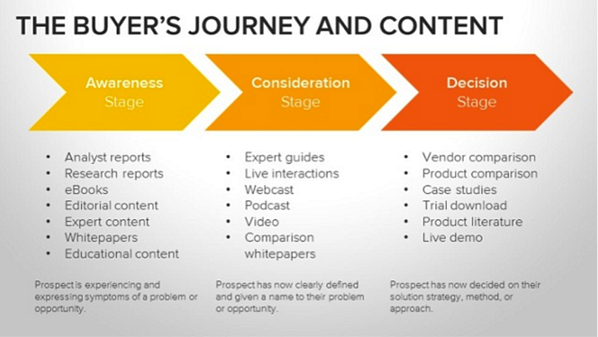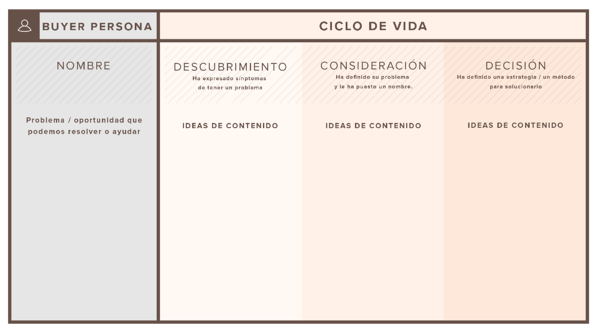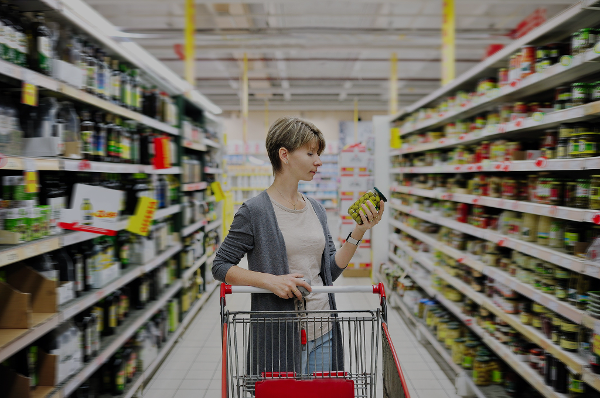Customer Journey in the Consumer Goods industry
The consumer goods industry, also called CPG (Consumer packaged Goods), in 2019 represented 635 billion dollars for the United States. It should be...
5 min read
Por Susana Matamoros | May 17, 2021
Consumers have changed their buying habits, and in recent years internet access has played a key role in that change. Before, a TV advert could be enough to make a person decide to buy, today this has changed to reading reviews, looking for options that best suit their needs and feeling closer to the brand they are consuming or will consume.
Considering this change in purchasing behavior, it is essential to also have a good view of the purchasing process.
Before starting with the 3 steps to create content, you need to know that the buying process of a consumer is not linear, customers do not always start at a stage of discovery and move to the next stage of consideration to reach the goal; it is quite the opposite, each customer can enter the conversion funnel at a stage that we had not planned for them, but do not worry every customer is different, and that is why we seek to know them and create campaigns based on the Buyer Persona. Therefore, if you want a customer to convert, you need to understand them, because it is only at that point that you will be able to offer something valuable or useful. The moment the person has that first interaction with your brand, it's time to strategically guide them through their buying journey by placing premium content and offers at the right time.
Index:
What are the purchase stages your potential customer follows?
Hubspot defines the Buyer's Journey as "the process customers go through to learn about, consider, evaluate and purchase a new product or service".
This journey starts at the discovery stage, when your consumer becomes aware of their needs and begins to look for options to meet that need and finally arrive at a purchase decision.
Understanding this process can be a challenge, especially when we add the need to create content that is adapted to each of these steps. Therefore, the best thing to do is to take a brief look at what each stage of the Costumer Journey consists of.
Awareness: The buyer recognizes that he/she has a problem and expresses it. Having awareness, he seeks to understand his problem more clearly through research and looks for options without commercial intent.
Consideration: At this point, the customer has already clearly identified their problem and has narrowed their options down to 2-3. The client enters a process of in-depth research (and directly comparing pros/cons). At this stage, the researcher may have a commercial interest in mind.
Decision: The customer has found the solution to their problem and decides to buy based on their research. To do this, he/she starts a process of choosing potential suppliers, he/she might also focus on narrowing down his/her list to shorten it and finally make a final purchase decision.

You can also read: The Buyer's Journey in Inbound Marketing Strategies
Now that we have reviewed the consumer's journey, it is time to explain in a simple way how to get in context with your ideal customers, using content.
Step 1. Create educational content:
For years we have seen how traditional schemes focus on promoting offers, showing the benefits, and trying to convince the visitor with cold calls, mass emails and/or advertisements. In this way we keep talking about the "medicine" without first considering the "disease".
In this traditional scheme, the consumer does not even understand why they should buy your product, this is where prospect education comes into play. As mentioned earlier in the discovery and consideration stage of the Costumer Journey, the consumer does not yet know how to solve their problem. They may have some knowledge, but they are looking for more information to decide. Therefore, what better action to take with your Buyer Persona than giving them that information and educating them.
Here are some tips on how to start creating content that educates:
Talk to your current customers and your sales and/or customer service team. Ask them questions such as:
To your current customers:
What questions/doubts did you have before you bought?
Was there anything that held you back from making a purchase, or made it difficult for you to take a decision?
How easy was it to find answers to any specific questions about the product/service?
To your sales and/or customer service team:
What questions do customers ask the most?
When offering the product, what objections did the customer have?
All this knowledge will be gold in the right hands and each of these answers will help you build content for each stage of the Costumer Journey. For example, talking about the problems associated with a given topic aligns with the discovery stage, covering the landscape of alternatives and solution strategies available in the market helps solve the problems related to this topic in the consideration stage or delivering information regarding the suppliers and brands of the products/services you offer aligns with the decision stage.
Remember, consumers appreciate content that makes them feel informed, intelligent, has their best interests at heart, is easily accessible and fun to share. Therefore, don't forget to create content that meets several of these characteristics, your goal is to build trust and establish a meaningful relationship so that you can earn the right to make an offer.
Here are some examples of different content formats that work very well to educate your leads at every stage of their buying cycle

Step 2. Create content to help make better decisions:
When you use content to define your customer's needs and requirements you are helping them make better buying decisions. Informed selling, among other things, allows your Buyer Persona to make decisions about what they are willing to pay, and the criteria they use to narrow down their list of options. At decision time, the mission is to deliver more value by creating premium content offers. This is not so easy, you must deliver a high level of value to your consumer because if you promise something that you think is a great offer, but is perceived by the consumer as low quality, you could risk losing their trust.
The best way to make a potential customer feel that they are making the right decision is to include video or case testimonials from your existing customers.
Step 3. Create your content map and sort for gaps:
Ensure your company creates effective content with a content map. This will help create an outline to define the content to be produced for each stage of your Buyer Persona's buying process. It will specify which messages will be provided to the user and in which formats (articles, eBooks, testimonials, case studies, reports, videos...).
Once you have organized the template with your offerings, do a content analysis to identify gaps, spot opportunities for other relevant content and why not, reuse your existing content by transforming it into another piece to give it better exposure. For example, you can create a video from a blog that was already written, or you can create an eBook based on several blogs that explain a common theme.

Here we provide you with all the information you need to start creating your content maps with this editable template with instructions and an example to inspire you.
Coming to the end of the post I leave you with this advice, before starting any action, first take the time to get to know your Buyer Persona and their Customer Journey that way you won't be wasting your effort, money and time, and remember to use and reuse existing content as much as possible.
Always keep in mind, content helps you inform so give your Buyer Persona lots of answers, even answers they didn't know they needed, they love that. It's time for you to start this journey with your customers, if you need help our Imagineer Customer Experience team will be happy to help you.


The consumer goods industry, also called CPG (Consumer packaged Goods), in 2019 represented 635 billion dollars for the United States. It should be...

Have you ever shopped at a supermarket, gone to a store looking for pants, or had lunch at a fast-food restaurant? Surely everyone, and if your...

In today's highly competitive market, people have a wide variety of brands or entities to turn to when they need a product or service. For a company...